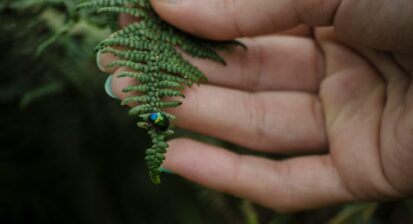AUTHOR’S CORNER
A little bit of science in a big magic world
15.10.2023
by Myrto Patraskaki
SHARE
I grew up with Harry potter universe, be it the books or the movies, I was reading harry potter before being able to read (meaning my parents were reading the books to me before bedtime).
When I learned how to read, I never stopped going through its magical pages and Harry Potter world became a big part of my life. Later on, so did Science. Could they be combined? Well… Absolutely! I couldn’t cover all aspects of this combination in a single article , so let’s see three things that are in between the magic and the scientific – muggle world. Bonus for anyone who has muggle co-workers: you can talk with them about harry potter from a scientific point of view!
Nicolas Flamel
Nicholas Flamel according to the books was a wizard, an alchemist and the only known maker of the philosopher stone, which could produce the elixir of life, and he had just celebrated his 665th birthday during Harry’s first school year. In real life, Nicolas Flamel was a French scribe and manuscript-seller born between 1330-1340 which indeed would make him 666 years old by the time the first book was written. Several years after his death, his name appeared in various alchemy books that were tying him with the philosopher’s stone and thus, he became known as an alchemist. Alchemists are known for trying to turn metals into gold but in reality they were actually trying to purify, mature and optimize some materials. This can be regarded as a necessary precursor to the development of modern chemistry, not bad right?
Bezoar
In the first year of potions class, students at Hogwarts learn that bezoars are stones found in goat stomachs and act as powerful antidotes against almost every poison. Bezoars exists indeed, they can be found in the stomach of various animals, including goats, and are most commonly formed from undigested hair. In the 16th century, it was a common belief that bezoars are universal antidotes so they were considered a very valuable item. King Charles IX of France acquired a bezoar and asked his physician Ambroise Paré whether there is a better antidote than a bezoar. Paré, being a proper scientist, was not convinced by the myth surrounding the bezoar and wanted to verify it himself. He conducted a simple yet grotesque experiment: he offered a death row prisoner the option to get poisoned and then treated with bezoar. If the treatment worked, the prisoner could walk free. The experiment did take place but unfortunately the person did not survive proving that bezoars, although rare and fascinating, have no healing properties.
Wingardium LeviOsa (not LeviosA)
Levitation and flight are some of a wizard’s “most rudimentary skills,” according to Professor Flitwick. Flying might be still too far from human abilities but what about levitating? There, we might be getting closer. At the High Field Magnetic Laboratory at Radboud University, scientists have actually made a frog float. The process is called Diamagnetic Levitation and it is based on the fact that all materials are magnetic and with the use of high enough magnetic field, the atoms consisting each material will move in the opposite direction of the magnetic field, thus “ float”. This means that it is possible to make a biological specimen levitate. Quite exciting!
At the end of the day, science is behind the most unexpected things, isn’t that magical?
RELATED ARTICLES

Protecting nature: our path to a healthier future
Human and environment, cause-effect relationship?

PODCAST 2 – Ερευνά Vs Κλασσική Ιατρική
Η Ιατρική έχει μόνο ένα μονοπάτι; ΄Ερευνα στην Αμερική ή την Ευρώπη;

Archive
Find all our past articles chronologically organized in our archive.
CONTACT US
____________
greekwomeninstem@gmail.com
Do you have ideas, questions, comments or special requests?
Would you like to highlight your research project or nominate a researcher that you would like to learn more about?
Please write to our email or fill out the form and hit “send”. We will be happy to talk with you!
[contact-form-7 id=”44″ title=”Contact form 1″]


